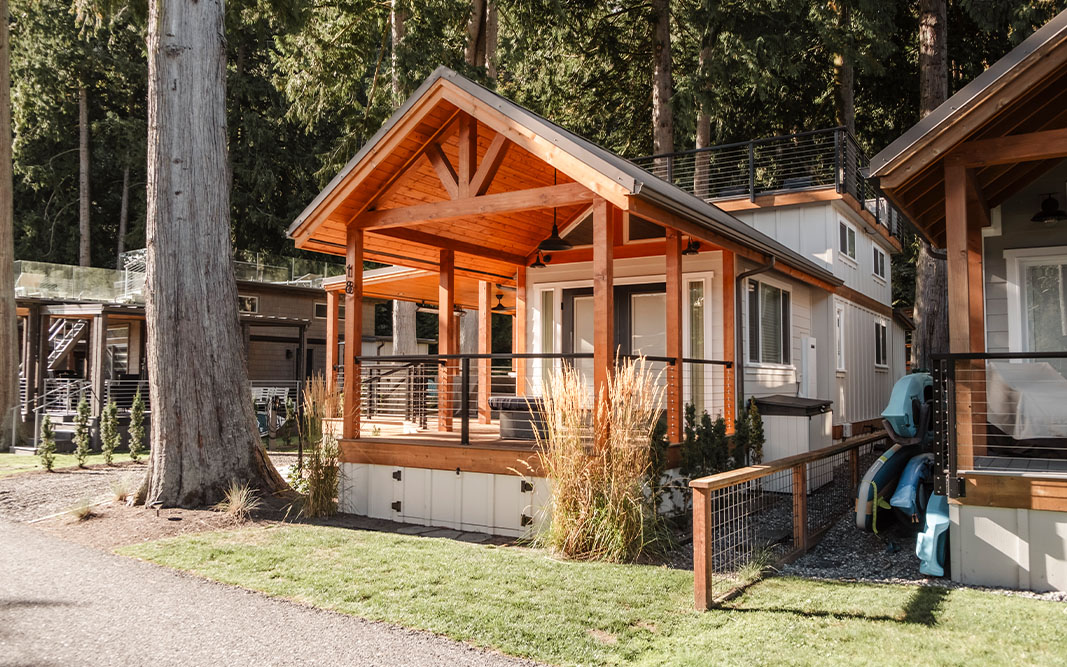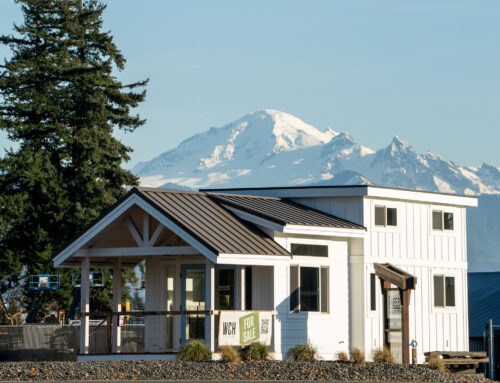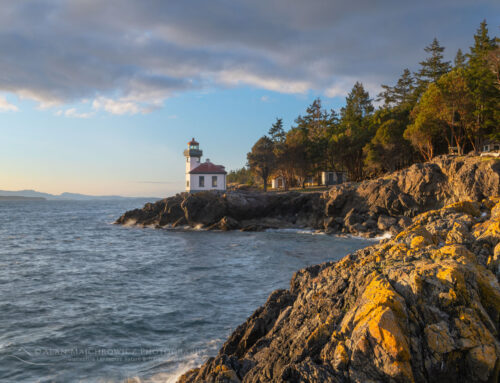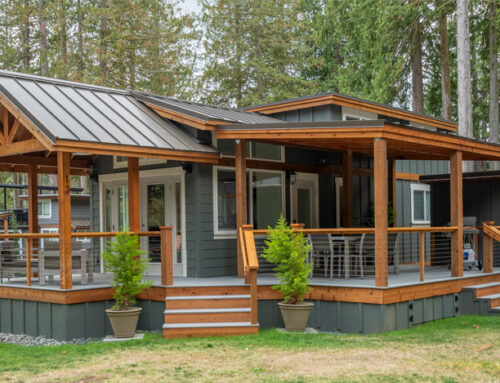Looking to make the switch to tiny home life in the beautiful Pacific Northwest? Going small can offer plenty of perks, like a smaller environmental footprint and a simpler lifestyle, however, there are also some unique challenges to consider. To help you get settled and make the most of your tiny home in the PNW, we’ve compiled our top five tips for creating a cozy, functional space while enjoying the stunning surroundings.
#1 Optimize Space with Multifunctional Furniture and Creative Storage Solutions
Choose furniture that serves multiple purposes and incorporate smart storage options to make the most of your limited space.
#2 Plan for Weather Resilience
Ensure your tiny home is built with quality materials that can withstand the PNW’s climate, focusing on durability and insulation.
#3 Utilize Outdoor Living Areas
Expand your living space by designing inviting outdoor areas like decks or patios, allowing you to enjoy the natural beauty around you.
#4 Embrace the Tiny Home/Downsizing Mindset
Adopt a minimalist approach to living, focusing on what truly matters and simplifying your lifestyle for greater peace of mind.
#5 Focus on Natural Light
Maximize natural light with large windows and skylights to create a bright, airy atmosphere, making your tiny home feel more spacious.
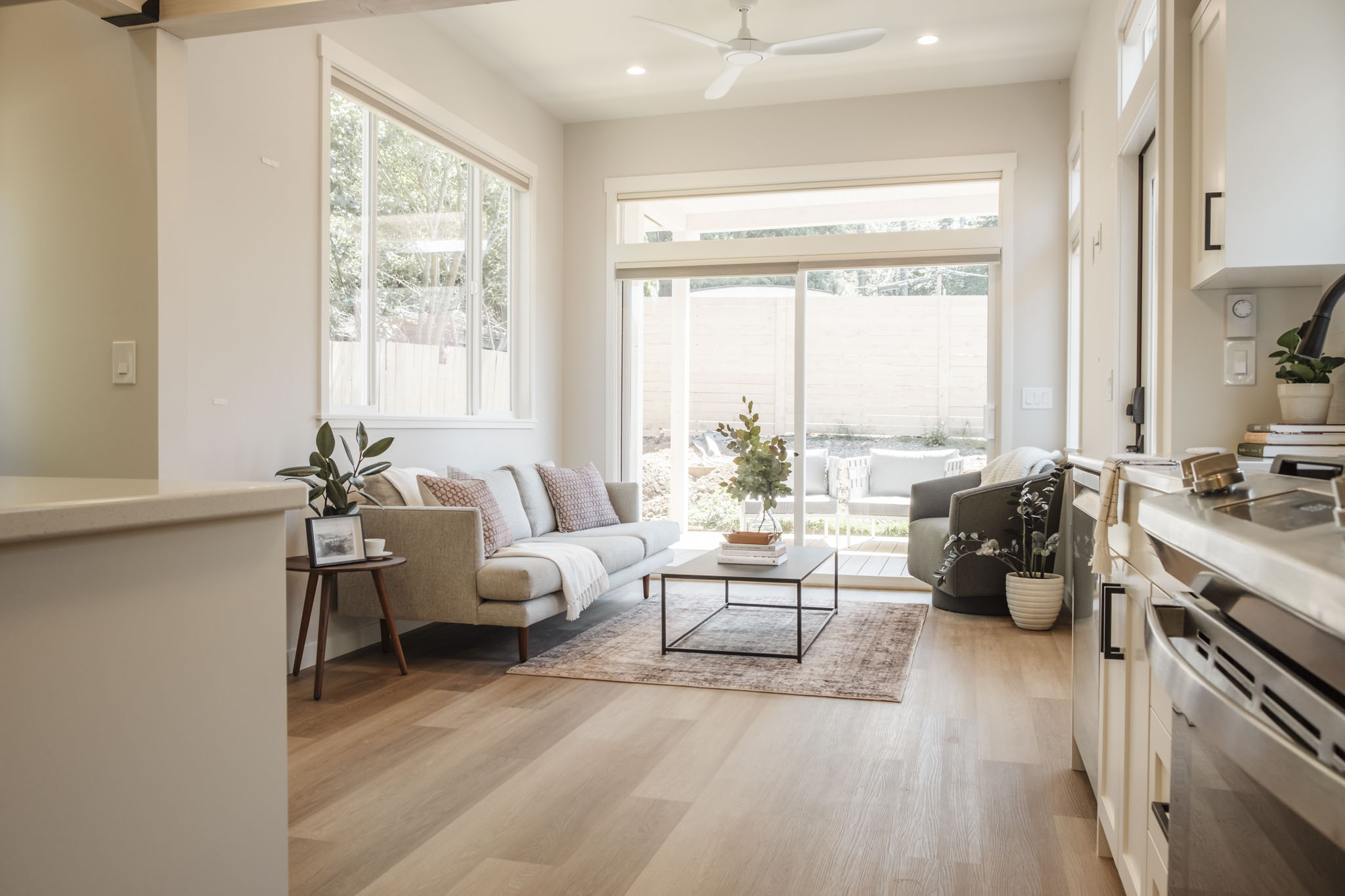
#1 Optimize Space With Multifunctional Furniture and Creative Storage Solutions
Multifunctional Furniture:
When it comes to multifunctional furniture for your tiny home, the opportunities are virtually limitless. These versatile pieces are essential for maximizing your limited space while enhancing both comfort and functionality.
For instance, a convertible sofa that transforms into a bed can provide a cozy sleeping area for guests without taking up extra room during the day. Additionally, dining tables that can extend or fold away offer the flexibility to accommodate meals for two or a gathering of friends, and allow you to adapt your space according to your needs. Wall-mounted desks can also be a game changer. These desks can be folded up when needed and tucked away when not in use.
By thoughtfully selecting and incorporating these multifunctional pieces, you can create an efficient, organized living environment that feels spacious and inviting. The key is to choose items that not only serve multiple purposes but also reflect your personal style and enhance your lifestyle.
With a bit of creativity and careful planning, you can transform your tiny home into a comfortable retreat that maximizes every square foot while providing all the functionality you need.
Storage Solutions:
Maximizing space in tiny homes is crucial for creating a functional and comfortable living environment, where you’re often talking in square inches instead of square feet. Let’s explore some creative storage solutions that allow you to do just that.
One effective approach is utilizing vertical storage space. Try using hooks to hanging racks to store items like jackets, hats, and bags. This allows you to use air space that would otherwise go to waste. Floating shelves above countertops or hanging shelves on walls also provides extra storage without taking up valuable floor space.
Built-in storage solutions are another excellent way to enhance functionality in a tiny home. Here are some examples:
- Customized cabinetry
- A built-in bench with storage compartments
- Under-stair storage
- Storage ottomans
- Shelves, drawers, or a small office nook beneath the stairs
- Magnetic strips or peg boards in the kitchen or bathrooms
Embracing vertical space, built-in options, and creative storage will enhance the efficiency of your living area and create a more comfortable environment.
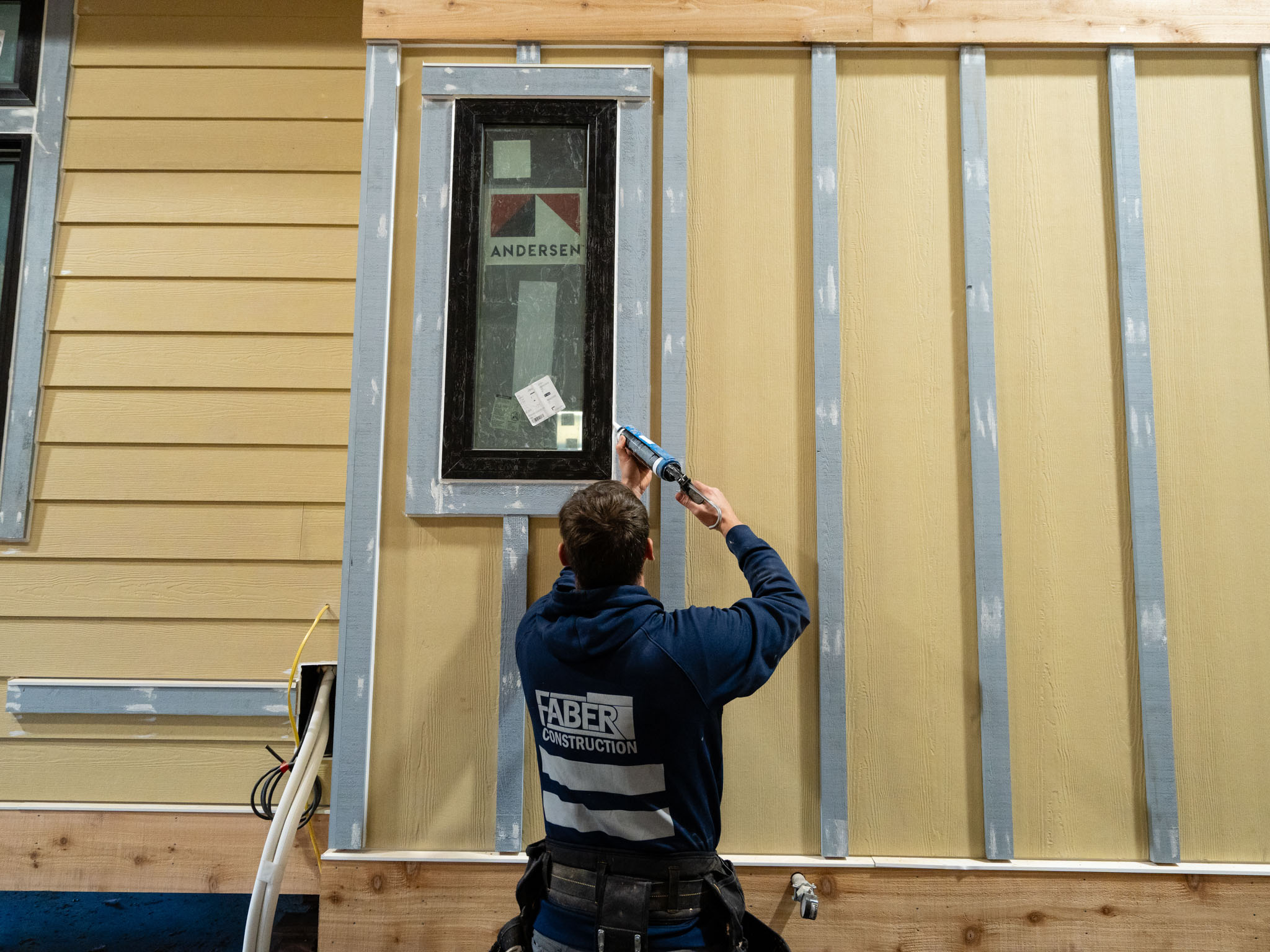
#2 Plan for Weather Resilience
Planning for weather resilience in a tiny home in the PNW is essential due to the region’s unique climate, characterized by heavy rainfall, humidity, and occasional storms. Here are some key considerations to ensure your tiny home can withstand the elements.
Durable Materials:
Choose durable quality materials built to withstand weather. High quality insulation will help regulate indoor temperatures and protect against humidity. Opt for treated wood, fiber-cement siding, and metal roofing, which can withstand moisture and resist mold and decay.
Storm-Resistant Features:
Incorporate storm-resistant features such as reinforced roofing and sturdy windows to withstand high winds and heavy precipitation. If your area is prone to snow, ensure your roof design can handle the load and prevent ice damming.
Ventilations:
Proper ventilation is crucial in the PNW’s humid climate. Install exhaust fans in areas like the kitchen and bathroom to reduce moisture buildup. Consider adding operable windows to promote airflow and minimize indoor humidity.
Energy Efficiency:
Energy efficiency is essential in tiny homes. Use energy-efficient windows and doors with good seals to reduce heat loss and prevent moisture entry. Double or triple-pane glass can help insulate against the cold and keep the home dry. Solar panels can provide renewable energy, making your tiny home more self-sufficient.
By planning for weather resilience, your tiny home in the PNW can be cozy and durable. With quality materials and smart design, you’ll create a safe haven that withstands the region’s climate.
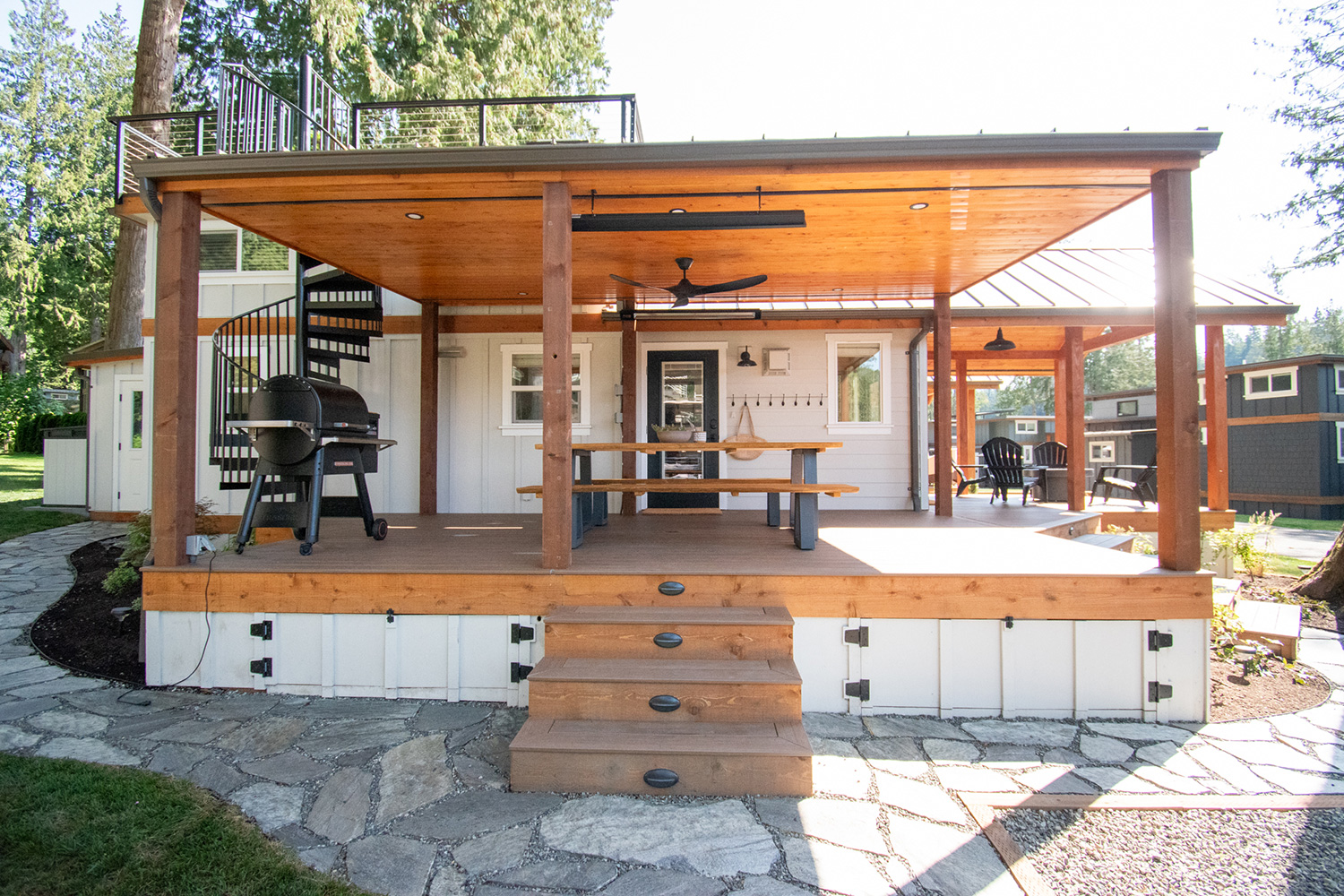
#3 Utilize Outdoor Living Areas
Living in a tiny home doesn’t mean you have to forgo outdoor space. That’s actually the main reason most people choose to go tiny! To be outside more! A deck with weather-resistant furniture and a gas fire pit can become a cozy retreat for morning coffee or evening relaxation.
First define your space. Do you want to use it for eating? Growing plants? Entertainment? Relaxation? All of these are possible on a tiny home property. After you’ve done this, you can design the perfect outdoor retreat.
Imagine this: an inviting outdoor dining area with a bistro table and folding chairs, perfect for al fresco meals. Adding a roof or outdoor umbrella can provide some much-needed shade for days by the lake, making your space more comfortable year-round.
Consider using cushions and a firepit to create a cozier relaxing environment. If plants and gardening is more your style incorporate vertical gardens using wall-mounted planters to add greenery.
Decorating your outdoor space is just as important to make it feel just like home. Add outdoor rugs, lights, plants and other decor to create a space unique to you.
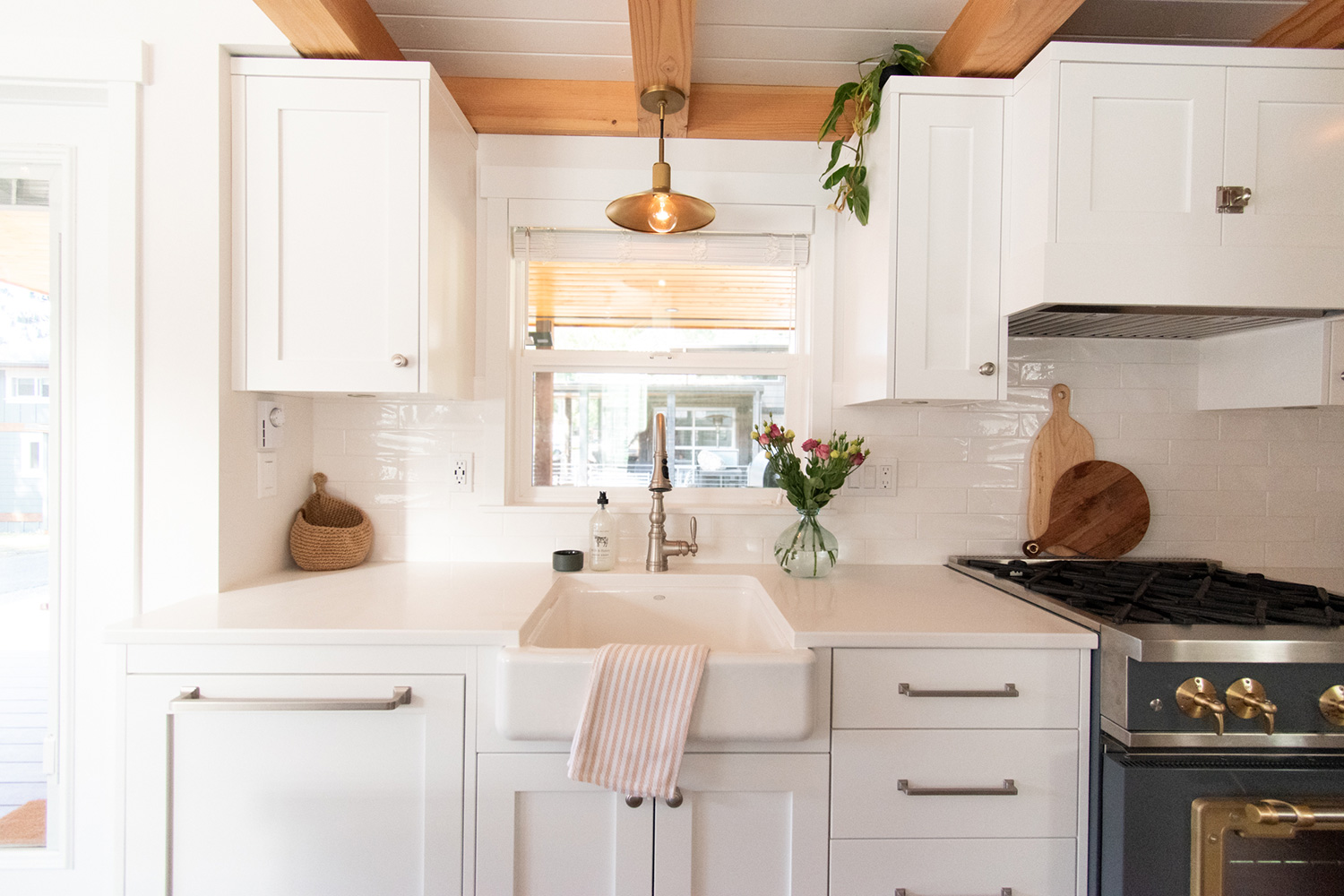
#4 Embrace the Tiny Home/Downsizing Mindset
Are you worried about having too many possessions for a tiny home? Don’t worry, there are a few useful hacks for downsizing your possessions while still having everything you want and need. Consider applying the 90/90 rule. This simple rule can be a game-changer. If you haven’t used an item in the last 90 days and don’t plan to use it in the next 90 days, it’s time to consider letting it go.
Living in a tiny home fosters a minimalist lifestyle and a decluttered living space, helping us concentrate on what truly matters. When considering this transformative journey, here are some ideas to guide you along the way.
The tiny home lifestyle encourages a focus on experiences instead of material possessions. Spend less time cleaning and maintaining your home, and more time doing what you love!
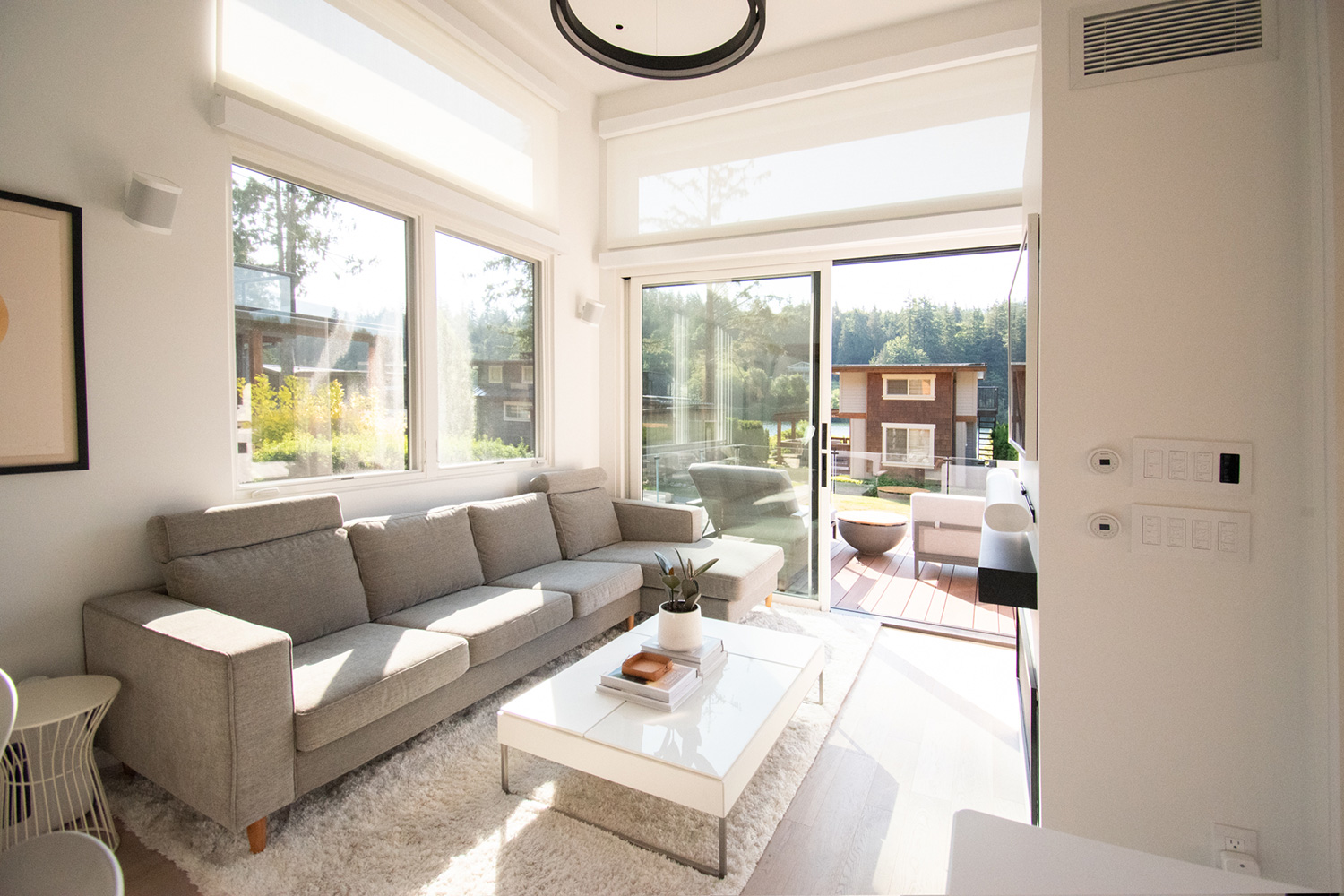
#5 Focus on Natural Light
Maximizing natural light is one of the best ways to make your tiny home feel more spacious and inviting. Here are some effective strategies to help you create a bright, airy atmosphere:
Installing oversized windows and skylights is a game-changer for any tiny home. Not only do they allow abundant sunlight to flood your space, but they also create a seamless connection to the outdoors. Positioning windows to face the sun will ensure your home remains bright and warm. Skylights can be particularly beneficial in areas where wall space is limited, drawing in light from above and adding a unique architectural element.
When it comes to window treatments, opt for sheer curtains or lightweight blinds that can be completely drawn back during the day. These treatments allow natural light to flood in while still providing some level of privacy.
The colors you choose can significantly influence the perception of space. Opting for light, neutral tones—such as whites, soft grays, and pale pastels—will reflect more light throughout the room. These will brighten the space and create an environment that feels like home.
Mirrors are a powerful tool in small spaces. By strategically placing them, you can amplify natural light and create an illusion of depth. Mirrors can also help break up the space visually, making it feel less cramped and more open.
Conclusion:
Transitioning to tiny home living in the beautiful Pacific Northwest offers a chance to embrace sustainability and a simplified lifestyle. While there are unique challenges, our top five tips—optimizing space, ensuring weather resilience, utilizing outdoor areas, adopting a minimalist mindset, and maximizing natural light—can help you create a cozy, functional home that harmonizes with your stunning surroundings.


